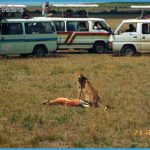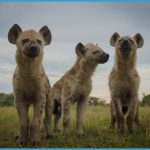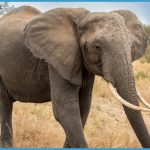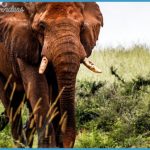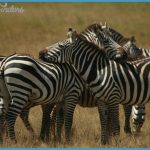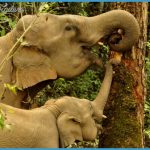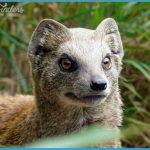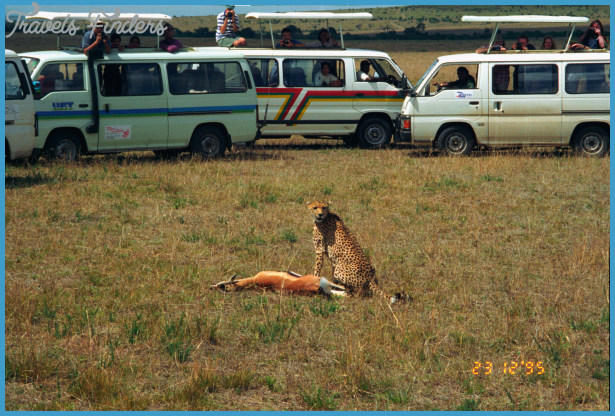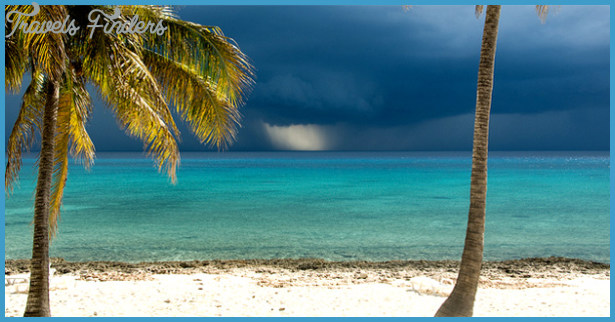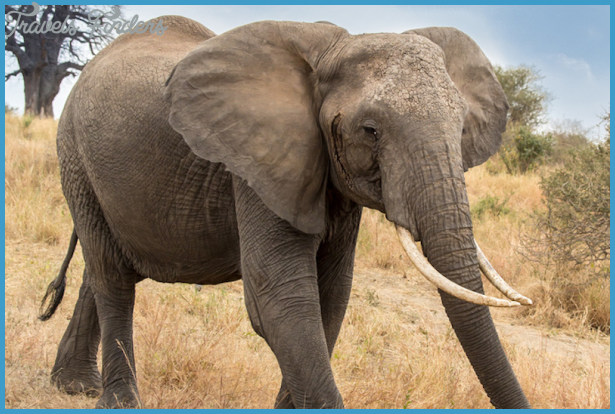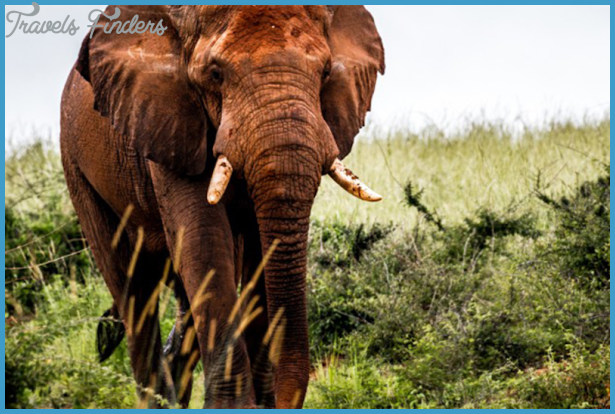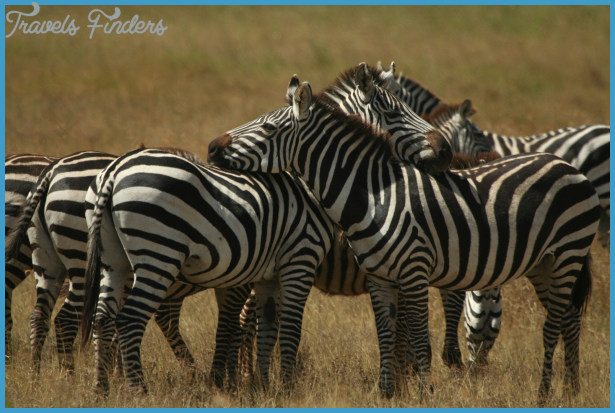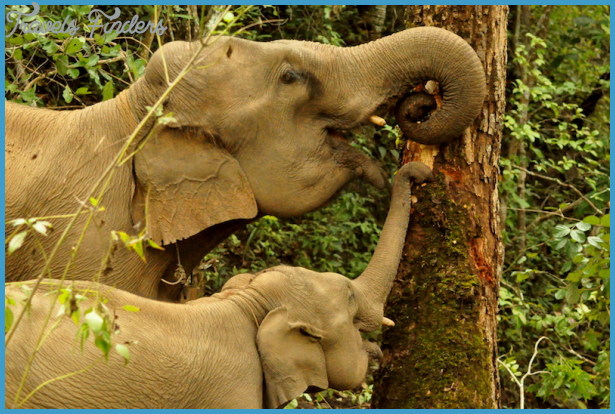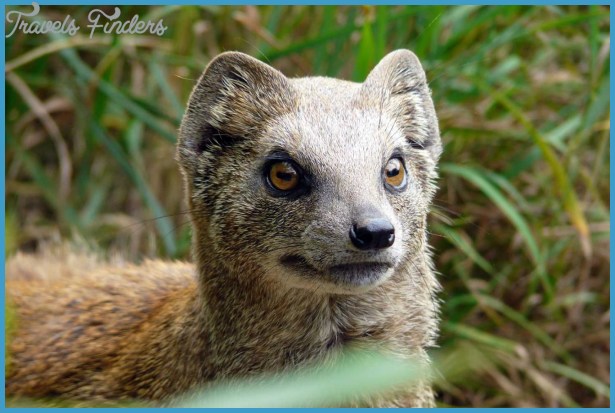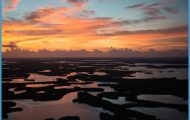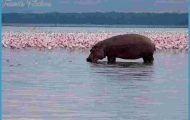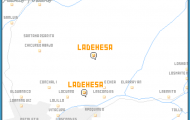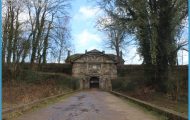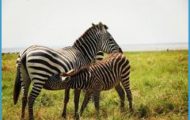When I returned from Kenya I contacted both Oxfam and Save the Children, both of whom have programmes of work in Kenya. I explained the issues, not as an ecological problem but from the viewpoint of helping the pastoral Samburu to help themselves to secure a more reliable lifestyle. I suggested that excavating small ponds and building some low dams on seasonal streams would hold water for their cattle (maybe drinking water too) in periods of drought. It seemed a simple and relatively cheap idea to me. Maintenance would need no advanced equipment. The reaction from these two NGOs? The most generalised answers giving no sense of commitment to any such proposals. They didn’t seem to want to discuss any ideas coming from someone with no experience of aid work though they do keep asking for donations!
One day in the forest I was walking along the Ngeng River, crossing little streams that run into it. Because of the otherwise dry conditions, these places held the most lush vegetation. What I wasn’t prepared for were the clouds of butterflies rising up all around me. I don’t think I have ever seen so many; confetti-like, they would temporarily occlude my view ahead. Most were white but in other shadier spots I spotted various combinations of scarlet, azure blue and yellow. There are well over 100 different butterfly species known from these forests, and probably several as yet undiscovered species too.
Wildlife Photo Travel Photo Gallery
The extensive Mathews Range forests are not only isolated; their wealth of wildlife isn’t fully explored. These are some of the more pristine forests remaining in East Africa and a place to be treasured. There is at least one plant species found here and nowhere else in the world; there might be others. A 2010 survey in parts of the forest by a team of biologists concluded that there are almost certainly a few invertebrates that are found nowhere else too.
The Mathews Cycad, the only known endemic plant here, is a kind of living fossil. With Lawrence Wagura I went off one day in search of the species and it wasn’t long before we spotted what was very obviously a baby version of this age-old tree. Maybe 60 cm tall, it was clearly biding its growing time under a fairly dense evergreen tree canopy high above, blocking out a lot of the light it needed to grow. In appearance the cycad looks like a small fern growing out of the top of a palm tree trunk. But it is neither a fern nor a palm. It is, in fact, more closely related to the pines. Cycads are trees that evolved alongside the dinosaurs; look at many of the drawings of a reconstructed forest scene at the time the Coal Measures were laid down 300 million years ago and they are some of the main trees in the picture.
They can be found in many parts of the world and there are more than 300 different species. We walked further on and after a while we found a very much larger specimen in a clearing where it was obviously enjoying more light. In front of it, I get Lawrence to pose for a picture. This cycad is around 5 m high and verdant green with huge, arching, fern-like but immensely tough leaves. So tough, maybe, that nothing seems to eat them. Unless, that is, the leaves are known by forest-dwelling mammals and invertebrates to be toxic if nibbled. Slow growing, these cycads are known to reach venerable ages, reputedly as much as 1,000 years. Maybe this Mathews specimen was here in the Middle Ages? There are certainly plenty of Mathews Cycads scattered about in these forests, from tiny seedlings to venerable oldies. They are undoubtedly doing well.
From camera traps set up in the 2010 survey, we know that leopard, lion, hyena, elephant, genet, civet, bushbuck and porcupine are around most nights in the forest. Our Samburu helpers had identified the tracks or droppings of several of these and others besides. A few days of quiet walking here and I had seen Olive Baboons, elephant, bushbuck, waterbuck (much larger antelope than the more delicate, somewhat bambi-like bushbuck and the proud owners of an elegant pair of up-pointing horns) one or more of several species of mongoose and much else.
One day, I walked with Lentaaya and Lendiki – one of the armed Samburu – a few kilometres upriver, following a rough path meandering between the trees. Suddenly, I saw two moran – young Samburu warriors’ – running towards us only a few metres away (I hadn’t heard any sound of their approach), their pencil-thin but muscular legs carrying them fast between the great trees. Carrying their traditional steel spears, these young warriors are known by some of the other Kenyan tribes as the butterfly people’ because of their garish colouring. These two – seemingly known to Lentaaya and Lendiki – were typically coloured and attired. I use the description attired’ rather generously; their only clothing was a loose kind of wrap-around skirt/shorts reaching from waist to knee and a rubber sandal made from discarded car tyres.
Their faces covered in red ochre and their hair matted with it, groomed and braided into a distinctive pattern, they sported the usual huge necklaces of multicoloured beads, bracelets on their wrists and large earrings. They were undoubtedly eye-catching. Theirs is a fashion statement that would steal any Paris haute couture show. And it is much admired by the Samburu girls – why bother otherwise? – many with whom the morans are allowed to have sexual relationships from a young age. It is these female admirers who make the enormous bead jewellery the morans wear.

